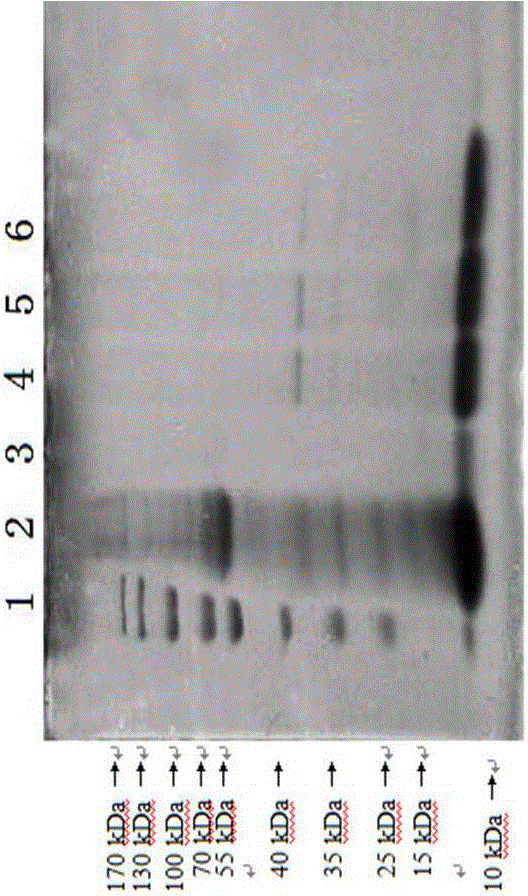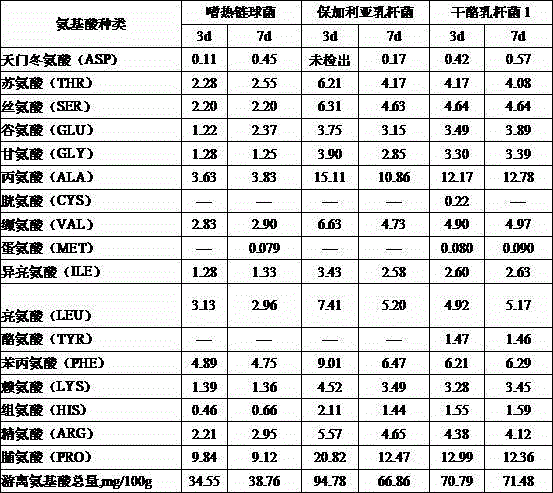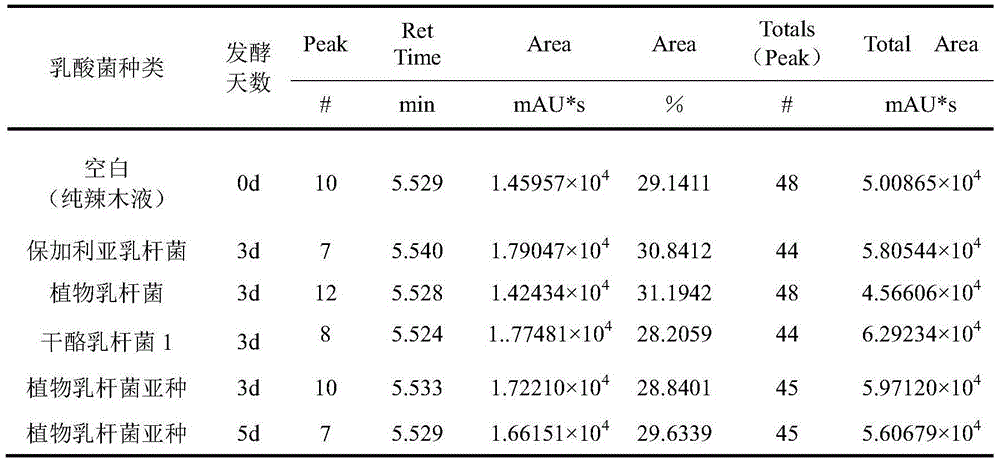Application of lactobacillus plantarum subspecies and lactobacillus casei 1 in horseradish tree leaf fermentation
A technology of Lactobacillus plantarum and Lactobacillus casei, which is applied in the fields of application, dairy products, milk preparations, etc., can solve the problem of low utilization rate of Moringa protein in strains and fermentation time, failure to improve the biological value of Moringa, and utilization of Moringa Low protein yield and other problems, to achieve good degradation, improve protein utilization, and promote the effect of development
- Summary
- Abstract
- Description
- Claims
- Application Information
AI Technical Summary
Problems solved by technology
Method used
Image
Examples
Embodiment Construction
[0016] The present invention is further illustrated below by way of examples, but the content of the present invention is not limited thereto.
[0017] Mix the superfine powder of Moringa leaves with distilled water in a ratio of 1:15, homogenize through colloid mill and homogenizer to make Moringa liquid, and inoculate 4% (volume percentage) of Moringa liquid respectively after pasteurization ) of Streptococcus thermophilus, Lactobacillus delbrueckii subsp. bulgaricus, Lactobacillus plantarum, Lactobacillus plantarum subsp., Lactobacillus casei 1, Lactobacillus casei 2, and Lactobacillus acidophilus 7 strains were fermented to study the effect of lactic acid bacteria on fermentation of spicy The best Moringa starter was screened out based on the growth conditions in the wood liquor and the degradation of Moringa oleifera protein.
[0018] Growth of Lactic Acid Bacteria in Moringa Liquid
[0019] (1) Adaptability of lactic acid bacteria in Moringa liquid
[0020] In this ex...
PUM
 Login to View More
Login to View More Abstract
Description
Claims
Application Information
 Login to View More
Login to View More - R&D
- Intellectual Property
- Life Sciences
- Materials
- Tech Scout
- Unparalleled Data Quality
- Higher Quality Content
- 60% Fewer Hallucinations
Browse by: Latest US Patents, China's latest patents, Technical Efficacy Thesaurus, Application Domain, Technology Topic, Popular Technical Reports.
© 2025 PatSnap. All rights reserved.Legal|Privacy policy|Modern Slavery Act Transparency Statement|Sitemap|About US| Contact US: help@patsnap.com



